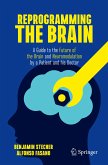Vertigo corresponds to a disturbance of perception and is associated with disruption of gaze stabilization, of posture control and of the autonomic nervous system. As a loss of orientation in space, it is mostly characterized by neurovegetative signs and unpleasant feelings as nausea, sweating, blood pressure swings, anxiety, dysequilibrium of the sensory systems of reference: eye, balance, and somatosensory perception in the space of reference. It is typically worsened when the head is moved. The most common diseases that result in vertigo are benign paroxysmal positional vertigo, Ménière's disease, and labyrinthitis. Less common causes include stroke, brain tumors, brain injury, multiple sclerosis, and migraine.
Hinweis: Dieser Artikel kann nur an eine deutsche Lieferadresse ausgeliefert werden.
Hinweis: Dieser Artikel kann nur an eine deutsche Lieferadresse ausgeliefert werden.








